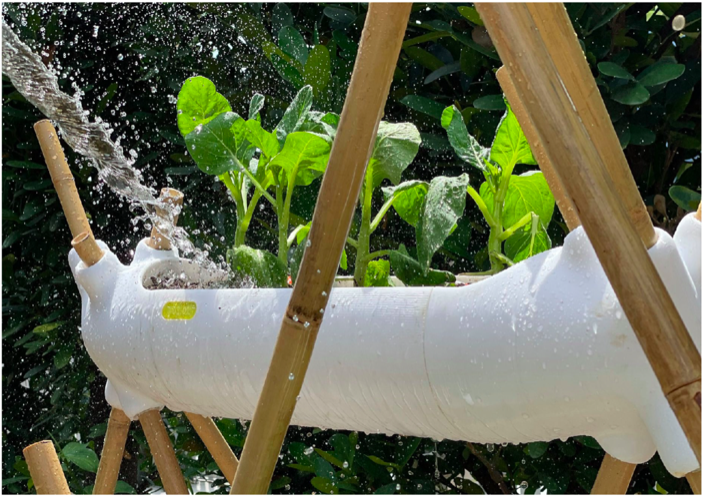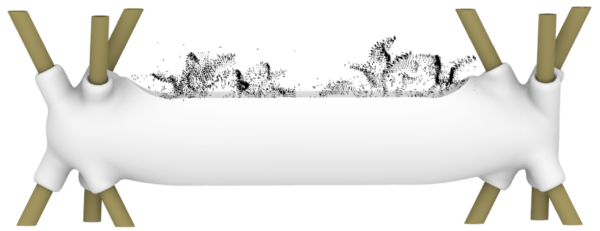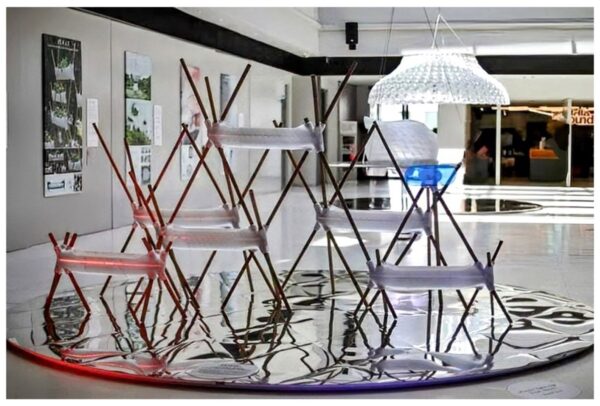Transforming Plastic Waste into Urban Farming Systems

Integrating waste polymers with additive manufacturing (AM) for constructing vertical farming systems provides a sustainable solution to address food insecurity and promote circularity.
Researchers from the Singapore University of Technology and Design have pioneered a groundbreaking 3D-printed vertical farming system named FLOAT. This system utilizes biopolymers and recycled polyethylene terephthalate glycol (rPETG) pellets from plastic bottles. This innovation demonstrates the potential of combining technology with recycled materials to reshape modern farming practices while reducing environmental impact.
You can also read: Transparent Sprayable Films: Advancing Agriculture Growth
Transforming Waste Polymers into Filaments
Recycling waste polymers into 3D printing filaments is vital in this study. Researchers transformed rPETG, virgin PET, and PLA into high-quality filaments through sorting, cleaning, shredding, and extrusion. They optimized the process by adjusting material proportions, extrusion temperature, and speed to ensure filament consistency and durability. These refined filaments are flexible and strong, making them ideal for creating modular components in vertical farming systems.
Role of FDM for the Manufacture of the FLOAT System
The FLOAT vertical farming system relies on Fused Deposition Modeling (FDM). Its precision and adaptability enable the production of lightweight, durable parts, such as trays, support frames, and irrigation channels.

The image illustrates the 3D model of Farming Lab on a Trough (FLOAT). Courtesy of Development of Vertical Farming Systems from Waste Polymers Using Additive Manufacturing Techniques.
These components are designed for hydroponic and aeroponic farming, maximizing resource efficiency and space utilization. FDM also allows for scalable and customizable solutions, making FLOAT a practical choice for urban agriculture.

The image shows the FLOAT system made up of rPETG. Courtesy of Development of Vertical Farming Systems from Waste Polymers Using Additive Manufacturing Techniques.
Sustainability and Economic Benefits
This research effectively addresses critical environmental and economic challenges. For instance, recycling plastics not only reduces waste but also lowers the carbon footprint associated with polymer production. Moreover, locally manufacturing farming modules minimizes transportation emissions and reduces costs, thereby making vertical farming systems more accessible to a wider audience. By integrating sustainable practices with cutting-edge technology, the FLOAT system significantly enhances food security while simultaneously supporting a circular economy. Ultimately, this innovative approach bridges environmental responsibility with economic practicality.
Challenges and Future Dynamics
Despite its potential, challenges persist. Recycled polymers may have inconsistent properties, complicating large-scale production. Future efforts should focus on refining material blends, advancing recycling technologies, and fostering collaborations between industries and researchers. With continued innovation, additive manufacturing can transform urban agriculture, bridging the gap between sustainability and food production.
